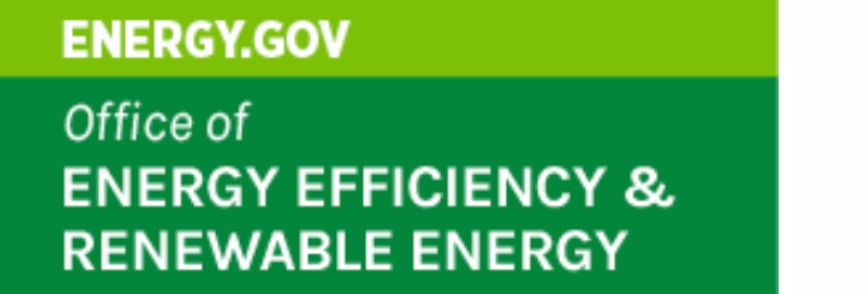Training Library
How Does Solar Work?

Explore the basics of solar radiation, photovoltaic and concentrating solar-thermal power technologies, electrical grid systems integration, and the non-hardware aspects (soft costs) of solar energy.
The amount of sunlight that strikes the earth’s surface in an hour and a half is enough to handle the entire world’s energy consumption for a full year. Solar technologies convert sunlight into electrical energy either through photovoltaic (PV) panels or through mirrors that concentrate solar radiation. This energy can be used to generate electricity or be stored in batteries or thermal storage.
Below, you can find resources and information on the basics of solar radiation, photovoltaic and concentrating solar-thermal power technologies, electrical grid systems integration, and the non-hardware aspects (soft costs) of solar energy. You can also learn more about how to go solar and the solar energy industry. In addition, you can dive deeper into solar energy and learn about how the U.S. Department of Energy Solar Energy Technologies Office is driving innovative research and development in these areas.
Solar Energy 101
Solar radiation is light – also known as electromagnetic radiation – that is emitted by the sun. While every location on Earth receives some sunlight over a year, the amount of solar radiation that reaches any one spot on the Earth’s surface varies. Solar technologies capture this radiation and turn it into useful forms of energy
There are two main types of solar energy technologies—photovoltaics (PV) and concentrating solar-thermal power (CSP).
Photovoltaics Basics
You’re likely most familiar with PV, which is utilized in solar panels. When the sun shines onto a solar panel, energy from the sunlight is absorbed by the PV cells in the panel. This energy creates electrical charges that move in response to an internal electrical field in the cell, causing electricity to flow.
LEARN MORE:
- Solar Photovoltaic Technology Basics
- PV Cells 101: A Primer on the Solar Photovoltaic Cell
- Solar Photovoltaic System Design Basics
- Solar Performance and Efficiency
Concentrating Solar-Thermal Power Basics
Concentrating solar-thermal power (CSP) systems use mirrors to reflect and concentrate sunlight onto receivers that collect solar energy and convert it to heat, which can then be used to produce electricity or stored for later use. It is used primarily in very large power plants.
LEARN MORE:
- Concentrating Solar-Thermal Basics
- Power Tower System Concentrating Solar-Thermal Power Basics
- Thermal Storage System Concentrating Solar-Thermal Power Basics
- Linear Concentrator System Concentrating Solar-Thermal Basics
Systems Integration Basics
Solar energy technology doesn’t end with electricity generation by PV or CSP systems. These solar energy systems must be integrated into homes, businesses, and existing electrical grids with varying mixtures of traditional and other renewable energy sources.
LEARN MORE:
- Solar Systems Integration Basics
- Solar Integration: Distributed Energy Resources and Microgrids
- Solar Integration: Inverters and Grid Services Basics
- Solar Integration: Solar Energy and Storage Basics
Soft Costs Basics
A number of non-hardware costs, known as soft costs, also impact the cost of solar energy. These costs include permitting, financing, and installing solar, as well as the expenses solar companies incur to acquire new customers, pay suppliers, and cover their bottom line. For rooftop solar energy systems, soft costs represent the largest share of total costs.
LEARN MORE:
- Solar Soft Costs Basics
- Community Solar Basics
- Connect the Dots: Innovations in Residential Solar
- Solar Workforce Development
Going Solar Basics
Solar energy can help to reduce the cost of electricity, contribute to a resilient electrical grid, create jobs and spur economic growth, generate back-up power for nighttime and outages when paired with storage, and operate at similar efficiency on both small and large scales.
LEARN MORE:
- Community Solar Basics
- Farmer’s Guide to Going Solar
- Homeowner’s Guide to Going Solar
- Solar Rooftop Potential
Going Solar Basics
Solar energy can help to reduce the cost of electricity, contribute to a resilient electrical grid, create jobs and spur economic growth, generate back-up power for nighttime and outages when paired with storage, and operate at similar efficiency on both small and large scales.
LEARN MORE:
- Community Solar Basics
- Farmer’s Guide to Going Solar
- Homeowner’s Guide to Going Solar
- Solar Rooftop Potential
Solar Industry Basics
Solar energy systems come in all shapes and sizes. Residential systems are found on rooftops across the United States, and businesses are also opting to install solar panels. Utilities, too, are building large solar power plants to provide energy to all customers connected to the grid.
LEARN MORE:
- Quarterly Solar Industry Update
- Solar Energy Resources for Job Seekers
- Solar Technology Cost Analysis
- Success Stories
Dive Deeper
Learn more about the innovative research the Solar Energy Technologies Office is doing in these areas.
- Photovoltaics
- Concentrating Solar-Thermal Power
- Systems Integration
- Soft Costs
- Manufacturing and Competitiveness
- Solar Energy Research Database
In addition to this basic information about solar energy, you can find more solar energy information resources here.

